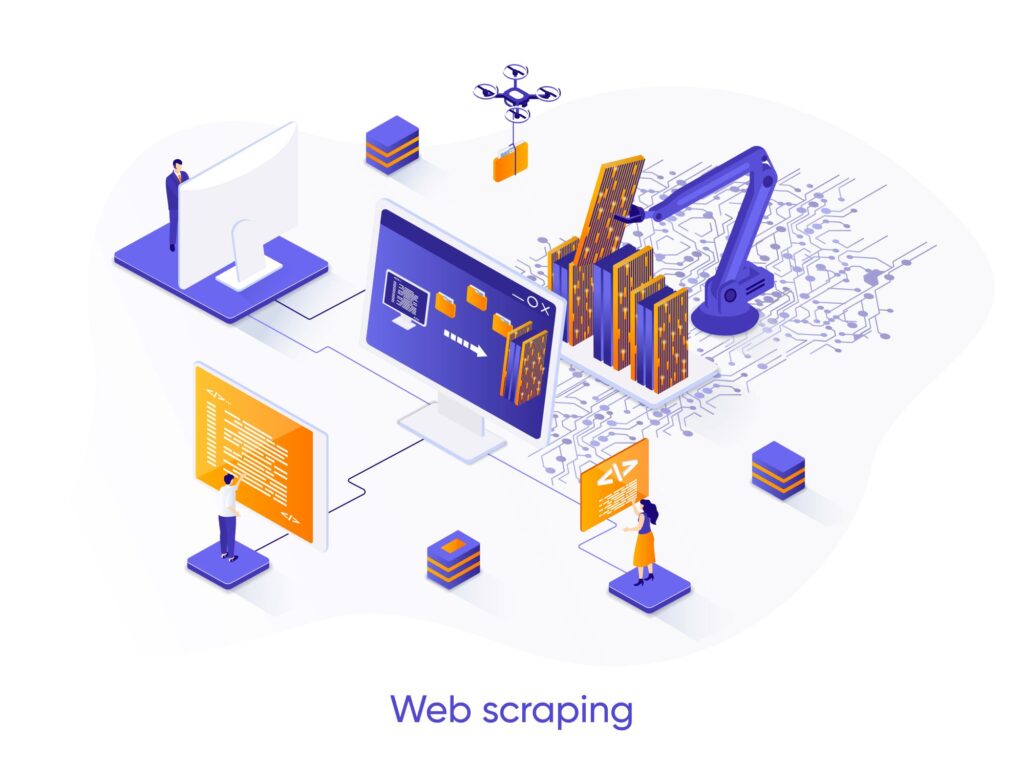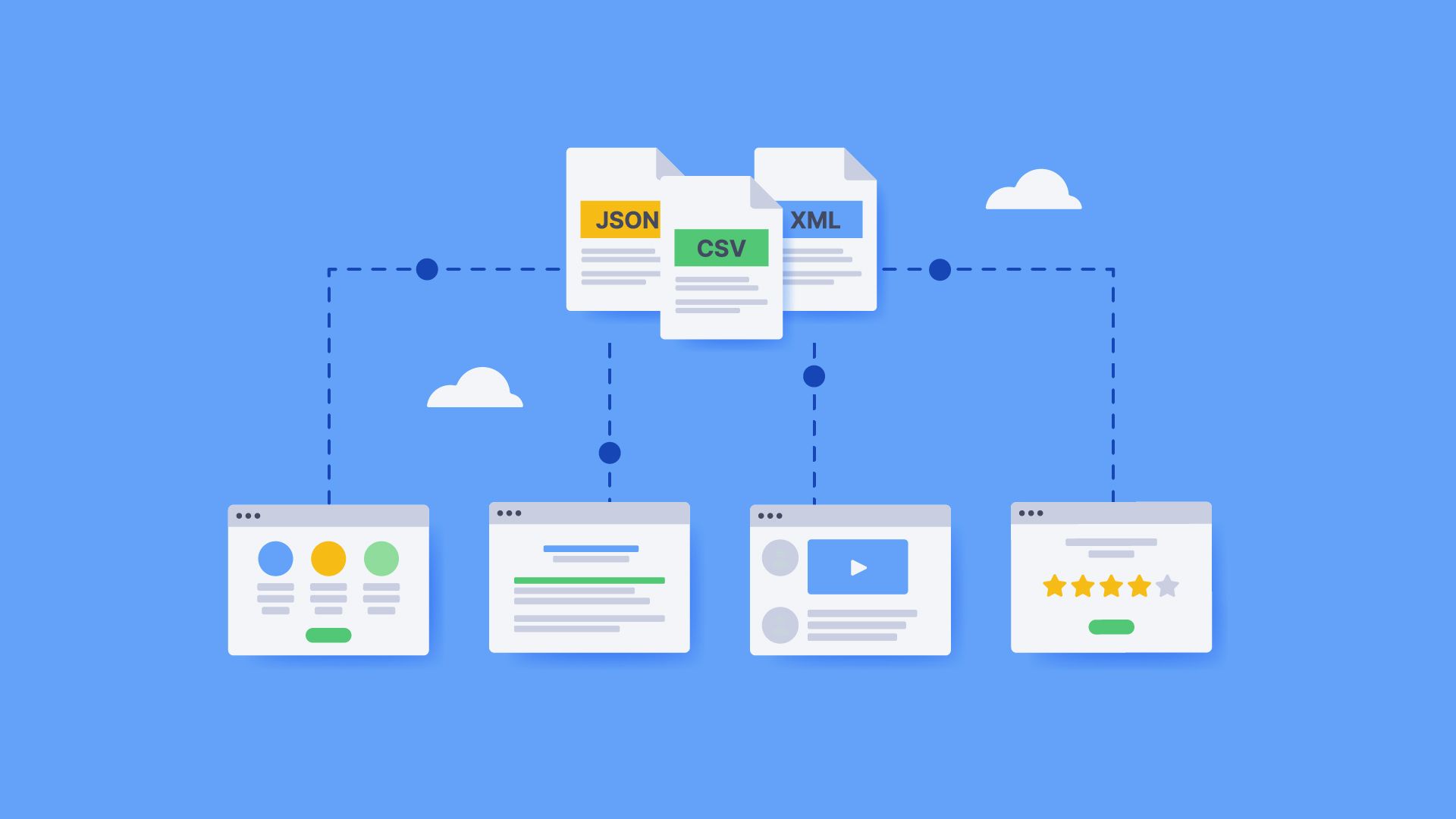Web scraping is using custom-built programs and software to extract content from websites. This practice is often employed by businesses in search of data from competitors’ sites and academics looking to gather information from online sources.
Web data scraping works by sending requests to target websites and pulling out the data you want based on those requests. Suppose your business is interested in data on real estate. In that case, you can use a web scraping tool to extract information such as property prices, locations, and types of homes from a target website; the gathered data can then be utilized to your company’s benefit.
The process of web scraping is often automated by computer programs and software that crawl through web pages and parse out the information you need to collect.
Standard Tools Used In Web Scraping
There are many web scraping tools out in the market. Nevertheless, the following are the most widely used:
1. Web Scraping Proxies
A web scraping proxy is the middleman between your web browser and the website you’re scraping. Web scraping proxies hide your internet protocol (IP) address, which is your digital persona, allowing you to access web pages without detection by the owners of the website you are scraping.
Typically, websites allow for data scraping only from a few pages and not the entire website. If the website you’re scrapping detects too many HTTP requests from your IP address, it’ll likely block it from accessing further information. But web scraping proxies make requests on your behalf using different IP addresses. This way, the website owners can’t tell which IP addresses are being used for scraping and which ones are legitimate.
For smaller business like yours, technological advancements, luckily, have flooded the market with cheap web scraping proxies that you can take advantage of.
2. Web Scraping Frameworks
Web scraping frameworks are open-source rules written in code that guide a computer in extracting data from a target website. These frameworks work in the following way.
First, web scraping frameworks make an HTTP request to a server (sending a specific request to the target website to retrieve data). After this, they break down the website code. They then save the extracted data to a local database, like a JSON file (a data format that humans can read and can easily be generated by machines) or an Excel spreadsheet.
3. Web Scraping Application Programming Interfaces (APIs)
Many web scraping APIs send a request to a server and get the target website’s web content as a response. The extracted content is parsed and saved as JSON or Excel spreadsheets. This makes it easier for developers to integrate the data into their applications.
A scraping API often incorporates features such as web proxies to hide your IP address and the capacity to automate tasks such as data cleaning with data from messy data sources. APIs are best saved for small-scale scraping projects as large-scale projects require more advanced tools and resources.
4. Regex Tools
Regular expressions, colloquially known as regex, are often used in web scraping to extract specific pieces of data, like words or characters, from websites.
Regex tools are often used alongside other tools like text editors or APIs. They come in handy when extracting data from websites with complicated formatting and presentation.

Web Scraping Best Practices
Web scraping is generally considered legal. However, there are factors to consider when scraping, like copyrights and privacy laws which can land you in trouble if you violate them.
When scraping a website for information, make sure to do the following:
1. Familiarize yourself with a website’s terms of service before scraping. Some websites explicitly prohibit scraping, while others allow conditional scraping. Failure to adhere to these terms of service may result in legal action preferred against you.
2. Use web-approved APIs to scrape websites. Web scraping with some tools can overwhelm a website’s servers, causing the website to crash. For this reason, some websites and third-party vendors provide approved scraping APIs to use when scraping data from their websites.
3. Use scraping tools responsibly. An easy and responsible way to do this is to limit the number of requests you make to a website at a given time to ensure you don’t overwhelm the servers and cause them to crash.
4. Scraping publicly available information online is legal as long as the data isn’t meant to be used for harmful purposes. Nonetheless, scraping private information like credit card numbers or other personally identifiable information can result in legal action against you.
Parting Shot
Web scraping is a powerful and indispensable tool for collecting website data, but it can be abused by those who don’t know how to use it responsibly too. Web scraping best practices include always keeping in mind your data’s source and ensuring that you’re not violating any terms or conditions when using this technique.

